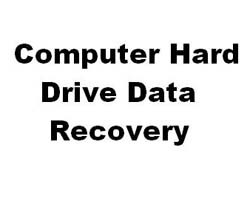
 License Type: Personal Use
License Type: Personal Use  File Size: 293 KB
File Size: 293 KB File Type: ZIP
File Type: ZIP
 SKU: 12339
SKU: 12339  Shipping: Online Download
Shipping: Online Download
Ebook Sample Content Preview:
Sure, at this point, you have data that is lost and the last thing you want to hear is that you could have prevented losing that data in the first place. There is nothing like an all important file that goes missing to be a good reason to get your data storage and back up in check again. In this chapter, we look at the various ways you can prevent any data loss in the first place. There are various methods you can use to prevent data loss from occurring again. Let's take a look at some of them.
USING A SECOND HARD DRIVE
One of the best ways to prevent losing your data from your computer is to protect it from the evil viruses and problems that commonly lead to the data loss in the first place. You can do this through using a second hard drive.
Let's say you are using a word processing program to write up a report for your college professor. When you save that report, it will likely save under your "My Documents" location in the file folder system. This seems like a good place to save the information but it can be treacherous, especially if this is the only place that you are saving data. There are several reasons why this is not the right place to put all of your saved files: software failures and virus problems.
In both of these situations, and others that affect your operating system, having your data in these files simply locks them away from you. In some situations, the only thing that can be done is to reformat the hard drive which also means reinstalling the operating system. As you can assume, this also means anything on the hard drive prior to the reformatting will be gone.
The best option, then, is to install a second hard drive on your computer. The good news is this is not a costly solution. Now does this help if it is located within your computer?
A virus attacks your operating system and files. Anything on your initial hard drive is wiped out, but the secondary hard drive is untouched.
The operating system fails or the hard drive fails itself. The second hard drive is still working and protecting your data.
The files on your hard drive are corrupted. The second hard drive is not affected by the corruption.
If you end up with a situation where the hard drive, operating system and even the computer itself fails, you can remove the second hard drive and put it into your new computer. As you can see, having a second, internally installed hard drive is one of the best solutions.
Some may not want to buy or install an internal hard drive. If you are unfamiliar with working on computer hardware, this is not a problem. You can instead purchase and use an external hard drive. Most of these external hard drives can be installed to your computer (or removed) quickly, usually through a USB port.
When buying an external hard drive, it is best to look for one that will have scheduled backups planned for it. You can also find hard drives that allow you to back them up quickly, with a one-touch sensor.
When buying an external hard drive, be sure to consider the size you need. A larger size can help to ensure all of your data is easily stored on the hard drive. And, like any other type of computer hard drive, you do need to maintain it as external hard drives can be overwritten accidently as well.







